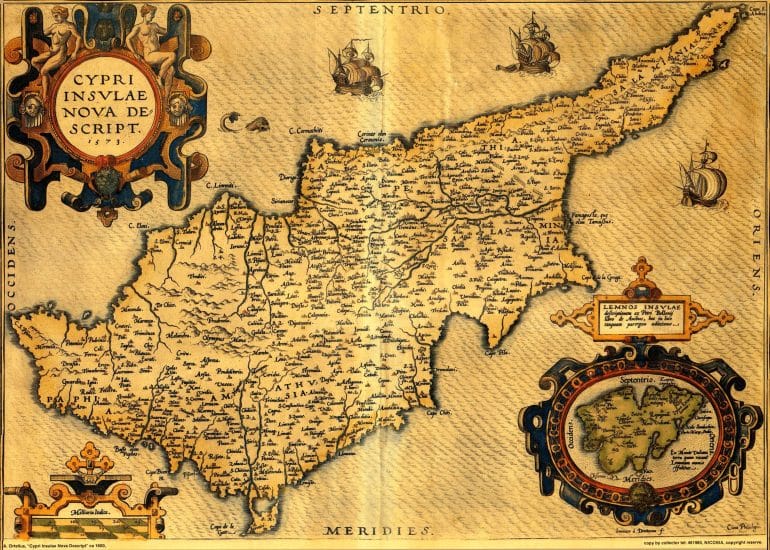The naming of the toponyms of the nine communities of the free Famagusta is of interest. Toponyms with particular historical and religious interest, as well as toponyms characterized by the peculiarity of the area in which the settlements were built. See below where the nine communities of free Famagusta got their names from.
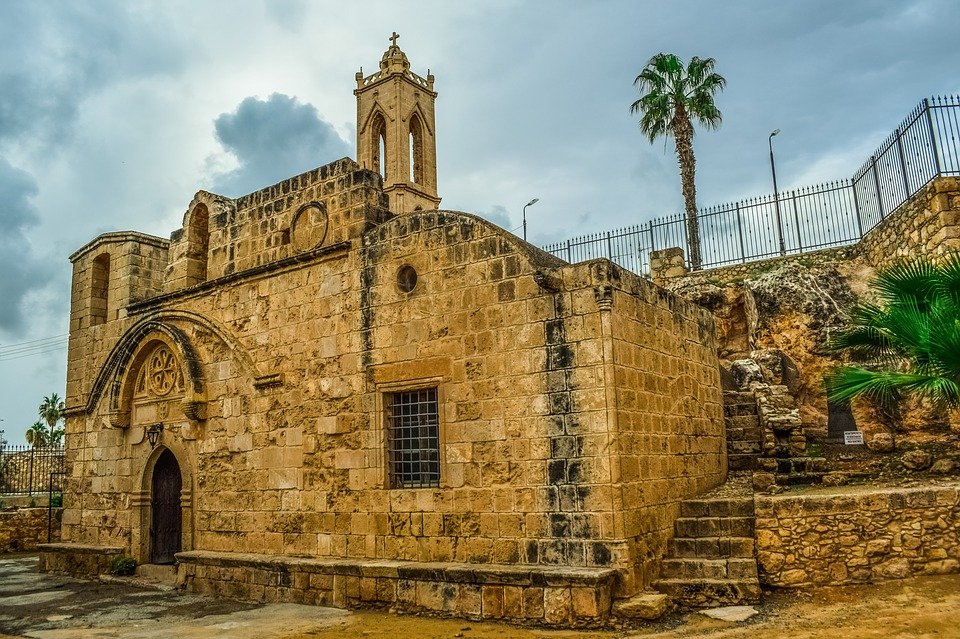
Αγία Νάπα
The name of the village came from the surname of Panagia, who was called Napa due to the fact that an icon of her had been found in napa. The word napa is ancient Greek (arch. napi) and meant a forest in a valley or gorge.
According to tradition, in the area where this world-famous Cypriot resort is located today, there was once a napa, that is, a forest. In this forest some hunters once found, in a cave, an image of the Virgin Mary. So they called her Panagia tis Napa, that is, Panagia of the Forest and, gradually, simply Agia Napa.
The cave where, according to tradition, the icon was found, is the one that still exists today as the village church, in the area of the medieval monastery (for which see entry Napa Agias monastery).
Apparently the cave had been used by ascetics at one time, probably during the iconoclasm period. However, it is not known exactly when the monastery there was founded. However, we have a mention of Agia Napa for the first time in 1366. The medieval chronicler Leontios Macheiras writes that in 1366 "the admiral [=admiral] leaving Ammochoston came to Agia Napan..."
The village is also marked as S. Napa on maps of the Venetian period. From the same period we also have the name of a tower / bastion of the fortifications of Famagusta called Santa Napa, because it was on the side of the city facing the direction of Ayia Napa.
We should consider that the village was formed during the late Byzantine years, as a settlement of farmers and fishermen, near the cave / monastery.
Various foreign visitors are talking about Ayia Napa. One of them, the Czech aristocratic traveler Aldrich Prefat, who passed through Cyprus in 1546 on his way to the Holy Land for a pilgrimage, but also returning from there on his way to Venice, was hosted in the monastery of Agia Napa after visiting Famagusta and from there he marched towards Larnaca. The Prefat does not speak of the existence of a settlement at that time, but only of the monastery which was occupied by Latin clerics of the Augustinian Order, while at the same time Greek Orthodox monks lived there. The next morning the visitor and his entourage attended service in the church of the monastery, which he describes as a building with two churches on two different levels. There were also built surrounding cells for the monks while a high wall surrounded and enclosed the space. There was in the second church, on the upper level, a large hollow in the rock, where there was an old icon of the Virgin Mary with Christ, "Byzantine style", as the visitor writes, and "as tall as a man", covered with gold and silver. It had been found, the abbot told him, once by someone who was digging to build a house, its finding was interpreted as a miracle and so the monastery was founded there.
The testimony of the Czech visitor is noteworthy that both the Augustinian Catholics, in the upper church, and the Greek Orthodox, in the lower church, held services in the two churches of the monastery. This was not an unusual phenomenon in Cyprus, especially during the period of the Venetian rule (1489 – 1570), when due to the conditions, Orthodox and Latins coexisted.
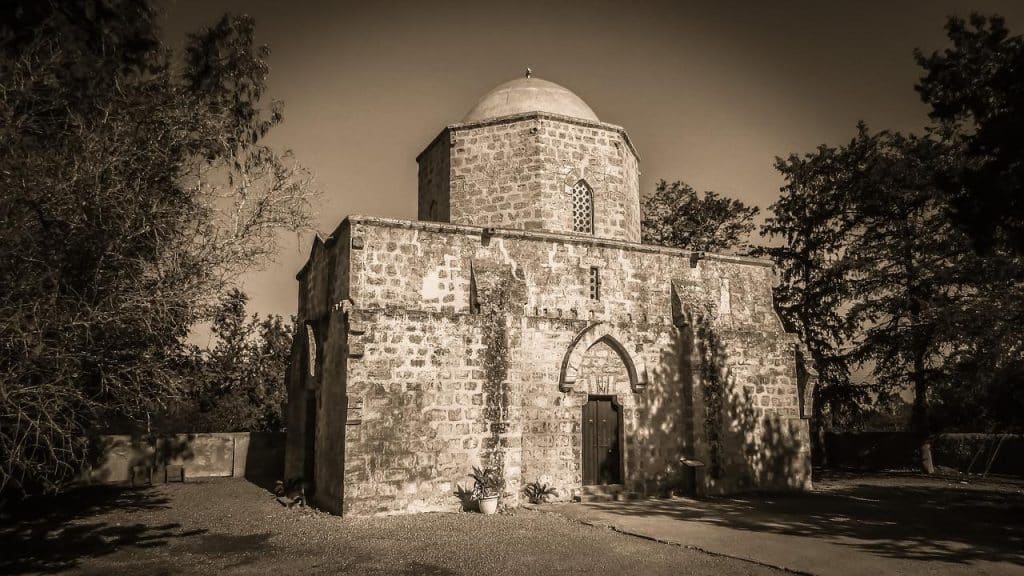
Avgorou
Avgorou, according to de Mas Latri, was a fief during the Lusignan-Venetian period, belonging to the Giblet family. Also at Assisi in Jerusalem, Avgorou appears as Avegorre and Avegore. On de Mas Latri's map it appears under the name Avegore, while on Venetian maps it appears as Ongoro.
Toponym: Avgorou, a name that does not seem to be related to eggs, as some have argued. The name of the village seems to have an older origin and, according to one interpretation, is due to its prominent position: Limit, general auspicious, whence and Avgorou. Another version of the origin of the name Avgorou is the one mentioned by N. G. Kyriazis: "A stranger asking how to enter this village, he received the answer "Go to (the) city and you will find it"».
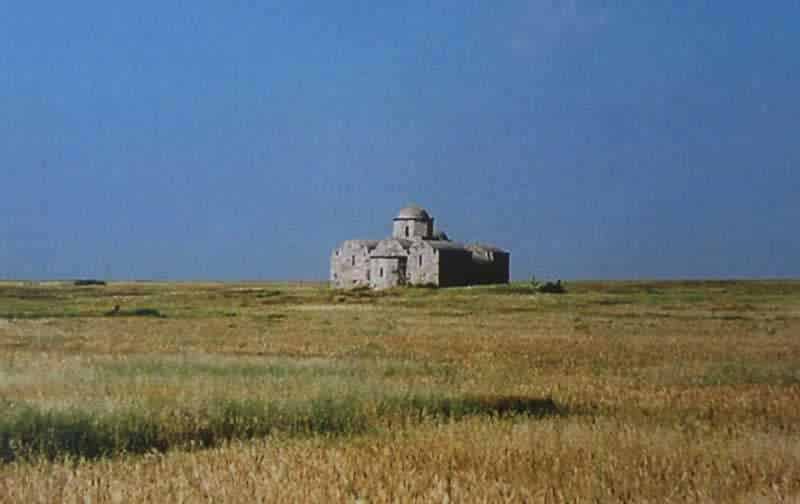
Acheritou
Although Acheritou is not included in de Mas Latri's list of Lusignan-Venetian fiefs or royal estates, it was nevertheless a medieval settlement. On Venetian maps it appears under the name Achiorito. Mariti who lived in Cyprus between 1760 and 1767 reports that Acheritou is densely populated and agriculturally developed. It is the estate of Andronikos Karydis, dragoman of A.M. of the Apostolic Queen of Hungary. Very close to his residence is a chapel dedicated to Saint Marina, of rough Greek construction, but adorned with wonderful old images of saints brought from houses in Famagusta... I stayed a few days in Acheritou during which I saw with great sadness the enormous destruction caused from grasshoppers. According to N. G. Kyriazis, the family dominates Male Karydis was one of the rather well-known and old of Larnacos. In the parish of Sotiros, until recently, the houses where the descendants of.
In addition to the fact that the village is marked on old maps, it is also mentioned as Achiorito in a manuscript from the Venetian period. The village existed during the Middle Ages and was apparently founded during the Byzantine years.
Toponym: Acheritou ή Of course, an ancient name that probably came from the Syrian name of the goddess Aphrodite, who was Ashera (Asherah). The Turkish Cypriots called the village Güvercinlik, which means Pigeon House, perhaps because many pigeons were bred there.
There is also a second version for the origin of its name. This version claims that perhaps the original name of the village was hagiological: Achiropoiitou, from the surname of Panagia which is also found elsewhere in Cyprus.

Achna
Achna is included in de Mas Latri's list of Lusignan-Venetian royal estates, and on Venetian maps it appears as Aina. On de Mas Latry's map it is shown as Athna. In addition to the fact that the village is marked on old maps (from the period of the Venetian period and later), it is also mentioned in an old manuscript from the period of the Venetian period, among the villages that belonged, administratively, to the district of Sivouri.
Toponym: Achna, a name that probably came from the arch. word powder denoting the vapor rising from water in the atmosphere, dew, or even fine dust.

Derynia
Although Deryneia is not mentioned by ancient writers, it seems to have existed since ancient times, as is evident from the name of the village, which is not far from the ancient port of Lefkolla (present-day Protaras) and the ancient city of Salamis. . That it is not mentioned by old writers means that the village was a small settlement. Its inhabitants were engaged in agriculture and fishing. The name of the village is a corruption of the ancient name Gerenia. With this ancient Greek name we know an ancient Greek city in the Peloponnese, the capital of the kingdom of the Homeric hero Nestor, the "wisest among the Greeks" according to Homer, who names him and Gerinion, i.e. coming from the city Gerinian. The preservation until modern times of ancient names of settlements and toponyms, related to the colonization of Cyprus by the Achaeans and other Greeks, is very often observed in today's Cypriot toponyms.
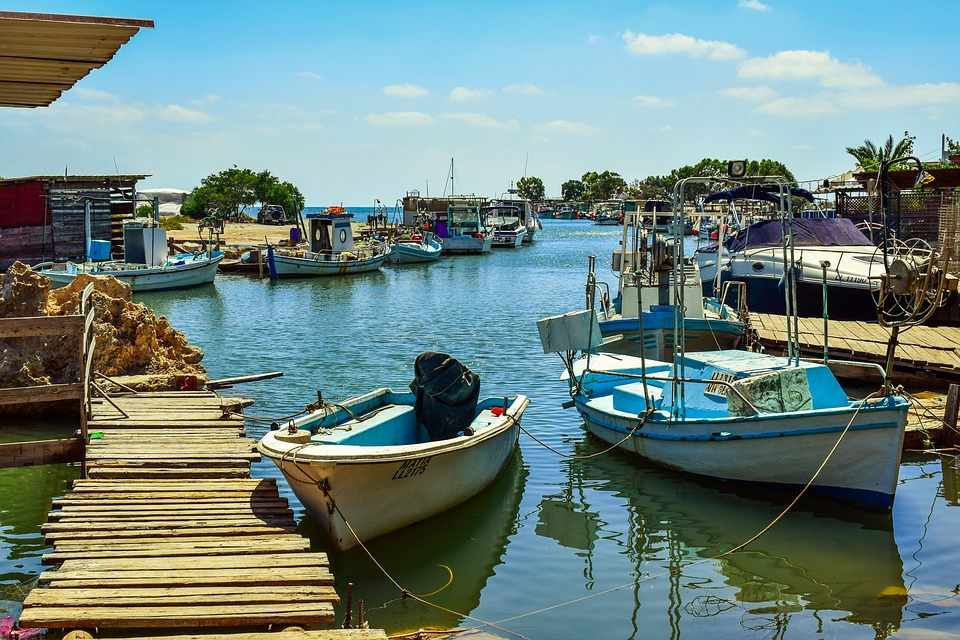
Liopetri
The village existed under the same name since the Middle Ages. On old maps it is marked as Ligopetri. With the same writing, de Mas Latrie also notes it, writing that it was, during the Frankish period, one of the royal estates that were administratively included in the bailliage of Sotiras.
The name of the village is composed of words few and stones according to a generally accepted interpretation, because its area was less rocky than other areas nearby. This interpretation also agrees with the name Ligopetri (Ligopetri) with which the village is marked on old maps. The word little/ few is pronounced in the Cypriot language idiom as llion/ lilies, from where lliopetrin and Liupetrin. However, it is possible that the first component of the name of the village was also the word sun, so sun + stones = yesterday - Liupetrin. Therefore stones in the sun, due to the absence of many trees.
During the period of the Turkish occupation, Liopetri was one of the villages that suffered particularly due to heavy taxation and persecution, which is why many of its inhabitants were forced to become linen cotton (=crypto Christians). But this does not justify the mistake of de Mas Latrie to mark the village as purely Turkish on the map of 1862 (indicating a population of 200-500 inhabitants). Because although it is reported that several residents of Liopetri were crypto-Christians, there is no evidence that the village was ever Turkish.
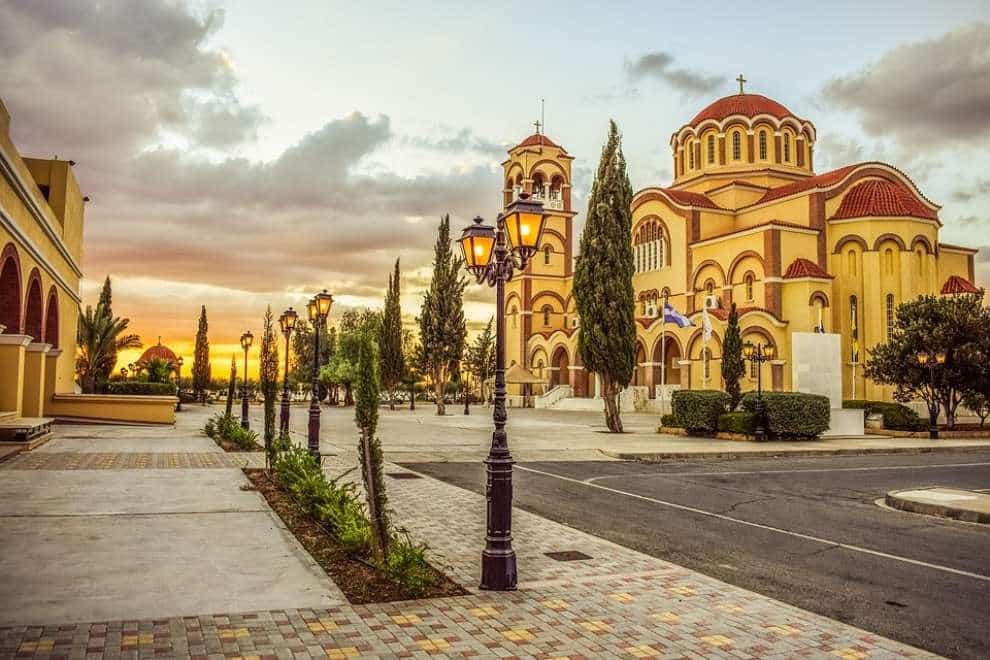
Paralimni
The name of the village, Paralimni, indicates exactly that it is built despite the lake. However, the large lake adjacent to the settlement forms only sporadically today, when the rains happen to be abundant, so the water from the surrounding area collects in it. On the official maps it is marked not as a lake but as a reservoir (see about it under the entry lakes).
Paralimni is not mentioned in medieval sources, at least with its current name. In its area, however, there is a marked settlement, on old maps, with the name Pomo d'Adamo (as on the map of A. Ortelius, 1573). This settlement should have been a private manor during the Frankish and Venetian periods, but we do not know which noble family it belonged to. However, de Mas Latrie writes that during the Frankish period the area of Paralimni was a royal estate and administratively belonged to the bailliage of Sotiras.
According to N. Cleridis (Towns and States of Cyprus), the current settlement of Paralimni succeeded another one that was built in a prominent position, specifically on a hill between the current settlement and the neighboring Deryneia, in the area called Ais Dimitris (and which probably it was also the name of the old settlement). According to N. Cleridis, the settlement on the hill was abandoned during the period of the Arab raids (7th-10th centuries AD), because it was too exposed to the enemies.
It is a fact that during the period of the Arab raids, most of the coastal settlements of Cyprus were attacked and destroyed, with the result that states and villages were abandoned and replaced by new settlements built in the interior of the island. However, there is no evidence that Paralimni was founded then (that is, between the 7th and 10th centuries), although this cannot be ruled out.
However, the area of Paralimni was also inhabited during Antiquity. Strabo mentions the port of Leucolla*, placing it somewhere between the city of Salamis and Cape Pidalion (today's Cape Cabo Greco). Thus, we can assume that the ancient port of Lefkolla was somewhere in the area of today's Protaras, where the location is good for anchoring. Strabo speaks only of a port, and not of a city or city with a port, as he does in other cases. But a port by itself, without a settlement to serve, is not understood (Strabo clearly speaks of a port, which also presupposes the existence of facilities, and not of a fort or a natural shelter for ships). Therefore, the port of Lefkolla should have been the port of some settlement that was inland and not on the beach. A few antiquities that have been found, including an ancient inscription dedicated to the god Apollo, are further evidence that there was an ancient settlement in the area which, perhaps, also included a temple of Apollo. However, systematic excavations have not yet been carried out in the area.
Some earlier scholars mistakenly believed that the naval battle between the naval forces of Antigonus and Ptolemy (successors of Alexander the Great) took place at Leucolla in Cyprus. However, Plutarch clearly mentions that this naval battle took place in Leucolla, which was on the island of Kos.
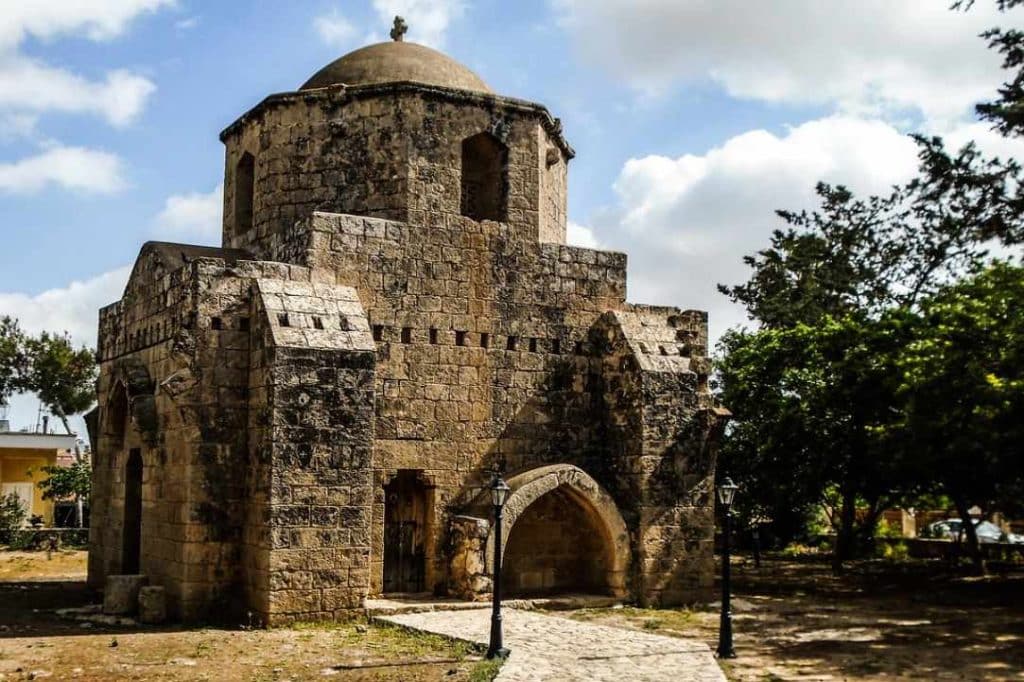
Sotira
The village, like Sotira in the province of Limassol, has a hagiological name: it bears his name Savior of Christ. In both villages, moreover, the main churches are dedicated to The Transformation of God and great festivities are held during this celebration, on August 6.
We can consider that the village was founded during the Byzantine years, judging by its name. However, with the same name it is mentioned that it existed during the Frankish period, de Mas Latri includes the settlement in those estates that were royal property. Besides, it is marked on old maps as Sotira.
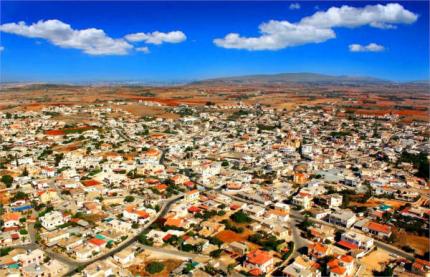
Frenaros
The village existed during the Middle Ages. On old maps it is marked as Frinaria. According to one point of view, the name of the village came from the Fréres Mineures, the Franciscan* Latin monks who are said to have owned a monastery in the area, that of Panagia Hortakiotissa, in the southeast of the village (also known as Panagia ton Hortakion). However, there is no evidence of the Franciscans' relationship with Frenaros, but Simos Menardos says that it is possible that they occupied the area. According to him, the name of the village should have come from them, also known as minorites. In the Chronicle of Moreus, the Franciscan monks are called Fremenurii. So, from the name Fre Minors (Freminors) came the name Frenaros. However, de Mas Latry writes Phrénaros, without connecting it to the Minorites.
The medieval settlement (fiefdom?) Frinaria was located about 2 kilometers south of the current settlement and the site is known today as Paleon Frenaros. It is unknown when the settlement was moved, however during the long period of Turkish rule. Abbot Giovanni Maritti (1760) writes that at that time the old settlement was in ruins. From the remains, it appears that it was a large settlement and only three churches survive today: Agios Georgios, Agios Theodoros and Panagia Hortakiotissa. The site is known today as Hortakia(s). For the three churches see respectively in the entries George Agios churches, Theodore Agios churches and Hortakion Panagia church.
Information source: Polignosi
